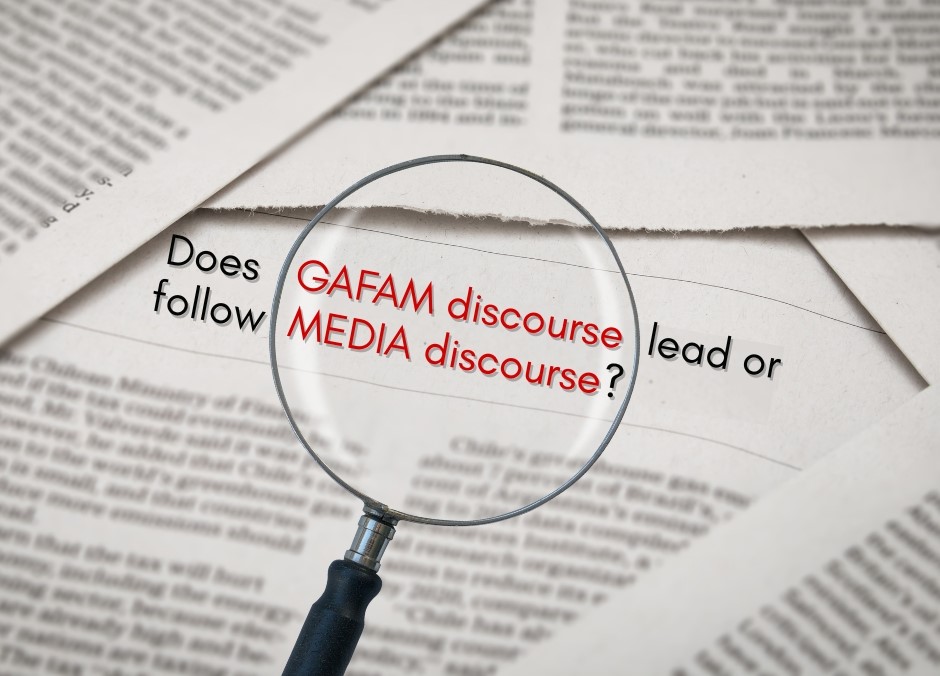
Does GAFAM discourse lead or follow public media discourse?
The final stage of our work in WP3 of the INCA project was to take a first step in the direction of analysing whether we can see evidence of GAFAM companies having an impact on public media discourse. Our premise for this analysis was that if this kind of an association of causality is to be there, we would also see a particular temporal pattern in how a discourse appears in the communication of the companies and in how it appears in the media. For GAFAM influence to be there, we should first see the topic trending in GAFAM discourse and only thereafter trending in media discourse.
For this analysis we used the topics that were identified in the previous tasks of the work package (see also here https://inca-project.eu/highlights/) and we traced the temporal sequence of the topics in GAFAM texts and in media texts. For each of the 185 topics that we had identified previously, we were looking for a particular pattern – whether changes in GAFAM discourse help to predict changes in media discourse over time. If this is the case, then it also makes sense to assume that the GAFAM companies could have had an impact on media discourse. If not, then this assumption does not make sense. Furthermore, we also tested for the opposite possibility – whether we see evidence that dynamics in media discourse could have led to changes in GAFAM discourse.
Out of the 185 topics that were analysed, we identified 15 such topics, where dynamics in GAFAM discourse were helpful in predicting similar dynamics in media discourse. For about 5 of these 15 topics, the prevalence in media and GAFAM discourse was also comparable (for the others, the particular topic was much more marginal in either the media or GAFAM discourse). However, we also detected 37 such topics (16 with comparable levels of prevalence for media and GAFAM) where dynamics in media discourse were helpful in predicting similar dynamics in GAFAM discourse. This suggest – on the most general level – that it seems to be, more often than not, the media that is leading and the GAFAM companies that are following discursive trends.
We also analysed if potential causality could be explained by the sentiment of the topics as well as their diffusion in media and GAFAM discourse as well as their semantic connectedness to other topics. Here, the results were not entirely clear. Our model showed that the effects of sentiment, media diffusion and GAFAM diffusion are all dependent on each other. Further analyses are required to untangle what this fundamentally entails.
The findings open several avenues for future research, including exploring which specific characteristics enable certain Big-Tech companies to have greater influence on media discourse. This study underscores the complexity of interactions between corporate giants and public media, highlighting the nuanced role of emotion, topic prominence, and strategic communication in shaping public discourse.
Martin Mölder, Tartu Ülikool
Share on Facebook Share on Twitter Share on Pinterest